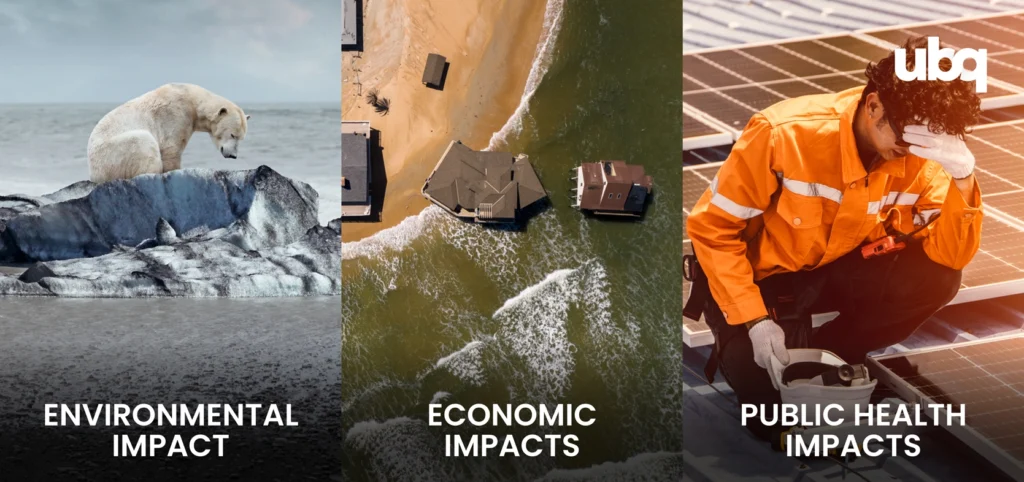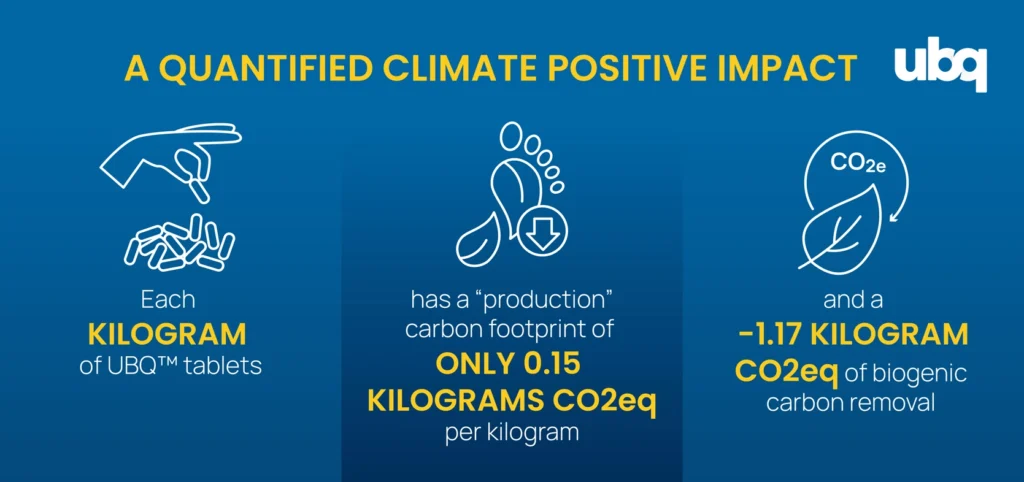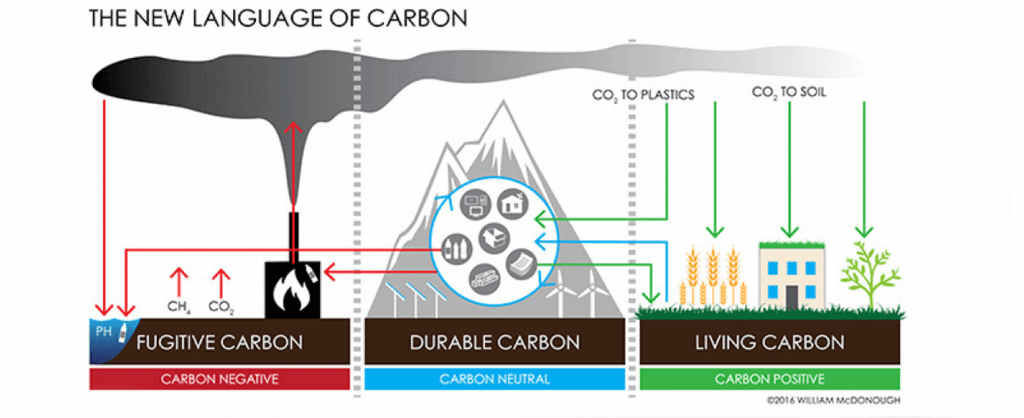Carbon dioxide (CO2) is a major factor driving global warming and a powerful agent in the earth’s climatic shifts. But what exactly is CO2’s role in this complex phenomenon? This article will introduce how CO2 influences global warming, focusing on its sources, scientific mechanisms, impacts, and future strategies for mitigation.
Human activities, especially burning fossil fuels, are the main culprits behind rising CO2 levels. The main reasons for the rise in atmospheric CO₂ are:
Burning of fossil fuels: (coal, oil, and natural gas): Since the mid-20th century, CO2 emissions from burning fossil fuels have skyrocketed from around 11 billion tons per year in the 1960s to an estimated 36.8 billion tons in 2023. This is the largest source, responsible for over 75% of global greenhouse gas emissions and nearly 90% of all carbon dioxide emissions. Fossil fuels are used for electricity generation, transportation, and industrial processes.
Deforestation: Trees absorb CO₂, so when forests are cleared for agriculture, urban development, or logging, not only is this carbon sink lost, but the carbon stored in the trees is also released back into the atmosphere.
Industrial processes: Certain manufacturing activities, notably cement production, emit CO₂ as a byproduct
While waste management is not the largest contributor to rising CO₂ levels, it plays a significant role in greenhouse gas (GHG) emissions, particularly:
- Methane Emissions from Landfills: When organic waste (like food scraps and yard trimmings) decomposes in landfills without oxygen (anaerobically), it produces methane (CH₄), a greenhouse gas that is 36 times more potent than CO₂ over 100 years and 86 times over 20 years. Landfills are a major source of methane emissions globally.
- CO₂ from Incineration: Burning waste, especially materials containing fossil carbon (such as plastics), releases CO₂ directly into the atmosphere. Waste incineration can emit about 0.38 tons of CO₂ per ton of input waste.
- Nitrous Oxide and Other Gases: Waste management activities can also emit nitrous oxide (N₂O) and fluorinated gases, both of which have high global warming potentials.
- In addition, the vehicles used for collecting and transporting waste consume fossil fuels, resulting in additional CO₂ emissions.
Historical Context and Human Influence
Carbon dioxide levels in the atmosphere have fluctuated over geological time, but the current levels are unprecedented in human history. Before the Industrial Revolution, atmospheric CO2 concentrations were about 280 parts per million (ppm). Today, they have surged to over 417.1 ppm, a 50% increase, primarily driven by human activities.
Burning fossil fuels, such as coal, oil, and natural gas, is the largest source of CO2 emissions. This process releases carbon that had been sequestered underground for millions of years, rapidly increasing atmospheric CO2 levels.
Deforestation is another significant contributor to rising CO₂ levels. Trees absorb CO₂ during photosynthesis, acting as carbon sinks. When forests are cleared, not only is this CO₂-absorbing capacity lost, but the biogenic carbon stored in the trees is also released back into the atmosphere.
It’s important to distinguish between biogenic and fossil carbon emissions: biogenic carbon originates from natural, renewable biological sources and is part of the short-term carbon cycle, whereas fossil carbon is derived from ancient, non-renewable sources like coal, oil, and natural gas.
Unlike fossil carbon, which introduces new CO₂ into the atmosphere, biogenic carbon is generally considered carbon-neutral, provided the biomass is regrown. However, large-scale deforestation disrupts this balance, turning a natural carbon sink into a net source of emissions.
How CO2 Traps Heat
CO2 is essential in the greenhouse effect, crucial for maintaining Earth’s habitable climate. When sunlight reaches the Earth’s surface, it is absorbed and re-emitted as infrared radiation (heat). CO2 and other greenhouse gases absorb this infrared radiation and re-radiate it in all directions, including back towards the Earth’s surface, trapping heat and warming the planet.
Unlike oxygen and nitrogen, which are not GHG, CO2 molecules absorb infrared energy at specific wavelengths. This absorption causes the CO2 molecules to vibrate and re-emit the infrared energy, enhancing the warming effect. This mechanism explains why even small increases in CO2 levels can significantly impact global temperatures. In 2022, CO2 concentrations reached a record high of 417.1 parts per million (ppm), the highest level in modern observational records and paleoclimatic records dating back 800,000 years.
Recent reports indicate that Earth’s greenhouse gas concentrations, including CO2, methane, and nitrous oxide, continue to set new records. These gases are primarily responsible for the ongoing rise in global temperatures. Over the past half-century, the ocean has absorbed over 90% of the excess energy trapped by these greenhouse gases, leading to record-high global ocean heat content and sea levels for the eleventh consecutive year.

Impacts of Increased CO2 Levels
The consequences of rising CO2 levels are profound and multifaceted, affecting the environment, economy, and public health. As CO2 concentrations continue to climb, the Earth’s climate system experiences significant alterations, leading to a cascade of effects.
Environmental Impacts:
- Global Temperature Rise: The increase in CO2 levels has directly contributed to the rise in global temperatures. According to NOAA, 2024 was the warmest year since global records began in 1850, with an average surface temperature 2.63°F (1.46°C) above the pre-industrial average. The last decade (2015–2024) includes all ten of the warmest years ever recorded, and the rate of warming since 1982 has been more than three times faster than the long-term average.
- Ocean Acidification: The oceans absorb a significant portion of CO2 emissions, which leads to ocean acidification. This process decreases the pH of seawater, adversely affecting marine life, particularly organisms with calcium carbonate shells or skeletons, such as corals and shellfish. The National Oceanic and Atmospheric Administration (NOAA) highlights the ongoing acidification and its impacts on marine ecosystems. According to Pacific Marine Environmental Laboratory, ocean heat and global sea level were the highest on record in a recent study. Over the past half-century, the ocean has stored more than 90% of the excess energy trapped in Earth’s system by greenhouse gases and other factors.
- Melting Ice and Rising Sea Levels: The warming effect of increased CO2 levels contributes to polar ice caps and glaciers melting, leading to rising sea levels. NOAA reported that In 2023, global average sea level set a new record high – 101.4 mm (3.99 inches) above 1993 levels.
- Extreme Weather Events: Higher CO2 levels intensify the frequency and severity of extreme weather events, including heatwaves, storms, and droughts.
Economic Impacts:
- Agriculture and Food Security: Climate change driven by increased CO2 levels affects agricultural productivity through altered precipitation patterns, increased incidence of pests and diseases, and more frequent extreme weather events. These changes threaten food security and livelihoods, particularly in vulnerable regions.
- Infrastructure Damage: Rising sea levels and extreme weather events cause significant damage to infrastructure, leading to costly repairs and adaptations. Coastal erosion, flooding, and storm surges pose ongoing challenges to infrastructure resilience.
- Water Scarcity: Shifts in precipitation, shrinking freshwater sources, and prolonged droughts contribute to growing water scarcity in many regions. This not only impacts agricultural irrigation and livestock but also increases competition for water across domestic, industrial, and ecological needs, straining local economies and public services.
Public Health Impacts:
- Heat-Related Illnesses: Higher temperatures increase the incidence of heat-related illnesses and mortality, particularly among vulnerable populations such as the elderly and those with pre-existing health conditions.
- Spread of Diseases: Climate change influences the distribution of vector-borne diseases, such as malaria and dengue fever, by expanding the habitats of vectors like mosquitoes.
Future Strategies to Mitigate CO2 Emissions
Addressing the challenges posed by rising CO2 levels requires a multifaceted approach that includes technological innovations, policy interventions, and individual actions. Here are some of the key strategies that are essential for mitigating CO2 emissions and combating climate change.
Technological Innovations:
- Carbon Capture and Storage (CCS): CCS technology involves capturing CO2 emissions from sources like power plants and industrial processes, then transporting and storing it underground. This technology can significantly reduce the amount of CO2 released into the atmosphere. According to the International Energy Agency (IEA), CCS is a critical component of global efforts to achieve net-zero emissions.
- Renewable Energy: Transitioning from fossil fuels to renewable energy sources such as solar, wind, and hydropower is essential. Renewable energy reduces dependency on fossil fuels and helps lower overall CO2 emissions. The International Renewable Energy Agency (IRENA) emphasizes the importance of scaling up renewable energy deployment to meet climate goals.
- Nature-Based Solutions: strategies that leverage natural ecosystems to remove carbon dioxide (CO₂) from the atmosphere and help mitigate climate change.
Policy Interventions:
- International Agreements: Global cooperation is vital in addressing climate change. The Paris Agreement, facilitated by the United Nations Framework Convention on Climate Change (UNFCCC), aims to limit global temperature rise to well below 2°C above pre-industrial levels, and to pursue efforts to limit the temperature increase to 1.5°C. Participating countries committed to reducing their carbon footprints and enhancing climate resilience. However, the latest monthly highs suggest that the Paris Agreement threshold will probably be exceeded before 2028.
- Carbon Pricing: Implementing carbon pricing mechanisms, such as carbon taxes or cap-and-trade systems, provides economic incentives for reducing emissions. By assigning a cost to CO2 emissions, these policies encourage businesses and individuals to adopt cleaner technologies and practices. The World Bank supports carbon pricing as an effective tool for reducing greenhouse gas emissions.
- Regulatory and Market-Based Policies: The introduction of mechanisms like the EU’s Carbon Border Adjustment Mechanism (CBAM), strict corporate sustainability reporting, and sector-specific emission targets (e.g., for automotive and shipping industries) is driving accountability and incentivizing emission reductions across industries
- Corporate Carbon Management: Organizations are increasingly setting science-based targets (SBTi), improving carbon emissions reporting, and integrating reduction strategies across their operations, supply chains, and product lifecycles
Individual and Community Actions:
- Energy Efficiency: Improving energy efficiency in homes, buildings, and transportation can significantly reduce CO2 emissions. Simple measures such as using energy-efficient appliances, insulating buildings, and adopting fuel-efficient vehicles make a substantial difference. The Environmental Protection Agency (EPA) provides resources and guidelines for enhancing energy efficiency.
- Sustainable Practices: Adopting sustainable practices, such as reducing waste, conserving water, and supporting sustainable agriculture, contributes to lowering CO2 emissions. Community initiatives and grassroots movements play a crucial role in driving these changes.
Long-Term Goals:
- Net-Zero Emissions: Achieving net-zero emissions by the middle of the century is a key target for many countries and organizations. This involves balancing the amount of emitted greenhouse gases with the amount removed from the atmosphere. Efforts towards net-zero emissions are supported by advancements in clean technology and global policy frameworks.
- Adaptation and Resilience: In addition to mitigation, enhancing adaptation and resilience to climate impacts is crucial. This includes building infrastructure that can withstand extreme weather events, protecting natural ecosystems, and ensuring food and water security in the face of climate change.
As industries around the world seek meaningful ways to reduce their carbon footprint, attention is turning toward scalable, systems-based solutions that not only lower emissions but also drive circularity and resource efficiency. Addressing climate change requires more than incremental improvements, it calls for a fundamental rethinking of how materials are sourced, manufactured, and used. This is where UBQ Materials steps in, offering a transformative approach that turns waste into a valuable climate-positive resource. UBQ provides companies with practical tools to achieve their emissions reduction targets, without compromising performance or profitability.
UBQ’s Future Strategies for Reducing CO2 Emissions
UBQ Materials is at the forefront of innovative solutions that can help reduce CO2 emissions and combat climate change. Here are some of the key strategies that UBQ is implementing to address this critical issue:
Waste Conversion Technology
Every kilogram of UBQ™ produced in Bergen op Zoom, the Netherlands, diverts 1.5 kilograms of waste from landfills and incinerators. UBQ has developed a groundbreaking technology that converts mixed household waste into UBQ™, a sustainable bio-based thermoplastic material. This innovative process significantly reduces waste sent to landfills and incinerators, thereby avoiding methane and CO2 emissions. By converting household waste into a new innovative thermoplastic material, UBQ™ prevents greenhouse gas emissions that would typically result from waste decomposition in landfills and burning in incinerators, thus avoiding its environmental impact.
A Quantified Climate Positive Impact
A third-party life cycle assessment (LCA, with boundaries of Cradle to gate) found that each kilogram of UBQ™ tablets has a “production” carbon footprint of only 0.15 kilograms CO₂eq per kilogram, and a -1.17 kilogram CO₂eq of biogenic carbon removal due to the conversion of organic waste into UBQ™. CO₂eq, or carbon dioxide equivalent, is a metric used to express the global warming potential of all greenhouse gases in terms of the equivalent amount of CO₂, allowing for standardized comparison and assessment. This results in a net cradle-to-gate carbon footprint of -1.02 kilograms CO₂eq per kilogram UBQ™ tablets.

Circular Economy Integration
UBQ actively promotes the circular economy by incorporating its sustainable material into various industries. By substituting or enhancing traditional oil-based plastics with UBQ™, manufacturers can reduce their environmental impacts, including carbon footprint, and contribute to a more sustainable production cycle, including reduction of scope 3 emissions. UBQ’s material has been implemented in products across multiple sectors, helping to close the loop on waste and support a circular economy.
Partnerships and Collaborations
UBQ is investing in research and development to improve their material’s properties, and collaborates with various stakeholders, including governments, corporations, and environmental organizations, to expand the adoption of its sustainable material and exploring new sectors for deployment. These partnerships are crucial for driving large-scale environmental benefits and promoting the use of bio-based thermoplastic materials across different industries. UBQ has partnered with major brands like to integrate UBQ™ into their product lines, showcasing the potential for widespread industry change.
Conclusion
Carbon dioxide (CO2) is a major driver of global warming, with human activities like burning fossil fuels and deforestation significantly increasing its levels. This rise in CO2 has led to higher global temperatures, ocean acidification, melting ice caps, and extreme weather events, all of which have severe environmental and economic impacts.
Mitigating these effects requires a multifaceted approach involving technological innovations, policy interventions, and individual actions. UBQ Materials exemplifies an effective strategy by converting mixed household waste into a sustainable thermoplastic, thus reducing CO2 and other greenhouse gas emissions and promoting a circular economy.


